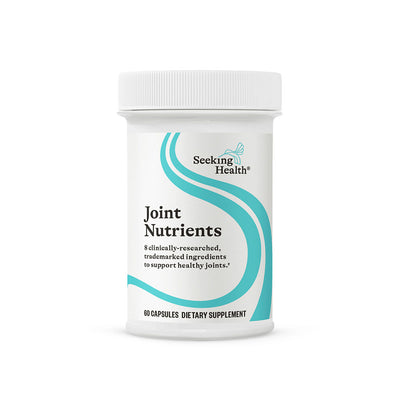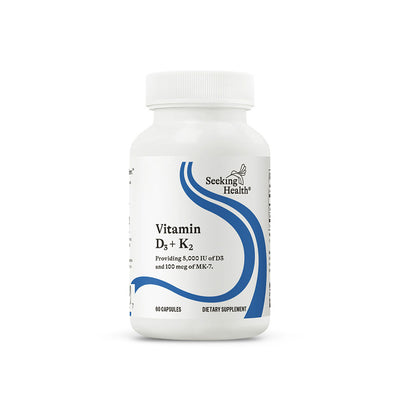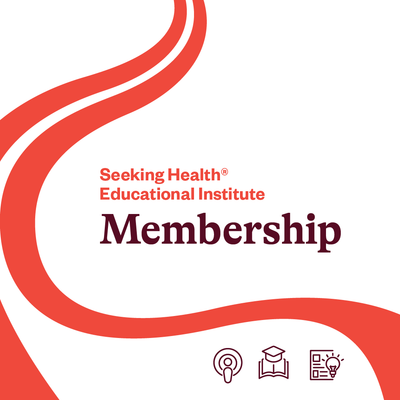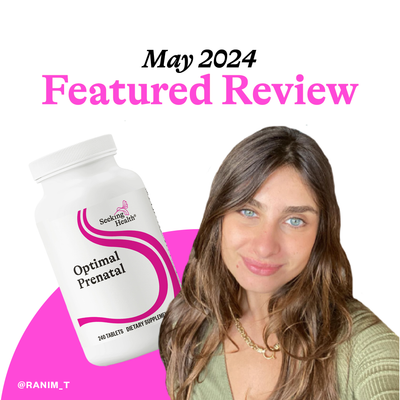The incidence of true food allergies mediated by immunoglobulins has increased significantly in the last 60 years from 1-2% to almost 10% worldwide. (1) Food allergies are different from food intolerances and food sensitivities which are mediated by other factors such as lack of digestive enzymes (lactase), histamine, or FODMAPs.
Common food allergies include tree nuts, peanuts, eggs, fish, shellfish, wheat, cow’s milk, and soy.
Many factors drive this increasing rise in allergies in young children. These include:
- Shift from rural to urban life
- Air pollution (2)
- Smaller household size
- Secondhand smoke exposure (3)
- Decreased diversity of gut microbiome (4)
- Increased use of antibiotics for childhood infections (5)
- Cesarean section birth (6)
Some other factors remain somewhat contradictory in their impact on food allergy risk. The evidence based literature contains hundreds of studies on the impact of Vitamin D deficiency and food allergies in children. A 2017 systematic review and meta-analysis of these concluded there was no impact on Vitamin D status and food allergy. (7) However, the quality of studies overall is uneven and does not take into account personal genetics. Since Vitamin D deficiency is so common and sufficient vitamin D is critical to proper immune functioning, one should optimize levels.†
Likewise studies on exclusive breastfeeding infants compared to infant formula and bottle-fed infants and food allergy incidence are conflicting. Given the highly variable and complex make up of human breast milk and other confounding factors, this is not surprising. It is thought that food allergen components from the mother’s diet can end up in breast milk. However, breast milk also contains immunoglobulins. The immunoglobulins may create the immune-tolerant environment that can support the infant’s resilience from food allergies. (8, 9) Thus, it seems appropriate to advocate a mostly breastfed approach when possible. That said, exclusively formula-bottle fed infants are likely not at greatly increased risk from this practice either. In any case, a gradual weaning of breastmilk or formula to a more diverse solid food baby’s diet should occur from approximately 4 months of life onwards.
Synthetic chemicals such as bisphenol A, phthalates, and pesticides also show conflicting data on increased risk of food allergies. (10) Given other known hazards of these endocrine-disrupting chemicals, avoidance of BPA, phthalates, and pesticides whenever possible is encouraged.
Note that any plastic containing phthalates should be avoided. BPA-free may contain BPS instead, which is just another phthalate. Polypropylene packaging is fine as it is free of phthalates.
Early Introduction of Common Allergens

It was once common practice for obstetricians to recommend avoidance of peanuts or known high risk allergic food during pregnancy. The American Academy of Pediatrics reversed this position in 2008. Now it is recommended that pregnant women eat a wide range of diverse foods through pregnancy. Their infant children, especially those with skin irritants, should also eat a wide range of diverse and complementary foods beginning at 3 to 4 months of age and continuing through the first 3 years of age. This window of opportunity is critical to establish immune tolerance. (11) For preterm infants, use the corrected age or adjusted age, which is the infant’s chronological age minus the number of weeks or months they were born early. (12)
If you do see rashes or other skin irritations developing during food introductions, work with a qualified health care provider skilled in the management of food allergies.
Other strategies for supporting the body’s resilience:†
- Supplement omega-3 fatty acids during pregnancy and breastfeeding as directed by your physician (13)
- Early exposure to soil microbes and diverse outdoor vegetation (14)
- Eat a high-fiber, predominantly whole foods plant based diet free from ultra-processed foods (4)
- Keep a dog or cat as a household pet (15)
- Supplement during pregnancy with a probiotic containing both Lactobacillus and Bifidobacter strains as directed by your physician (16)
- Supplement with an infant probiotic as early as possible after birth to support a healthy immune system. Use as directed by your physician. (17)

The research into skin interventions and skin irritation occurrence is mixed. This may be due to the confounding influence of the various lotions and emollients being used in trials as well as the household exposures, climate, time of year, and underlying genetics of the population studied. (18, 19) One studied protocol with positive results consisted of baths for 5–10 min with added emulsified oil (3 Tbsp per 2 gallons) at least 4 days per week. A lotion with added antihistamine was applied to the face after each bath. This protocol began at week 2 to age 8 months. Use of soaps and bubble bath products was discouraged.
Chlorine is a skin irritant and damages the skin’s DNA. (17,20) Filtering out the chlorine prior to bathing is important. Consider adding vitamin C powder to bath water prior to bathing the baby. One gram of vitamin C as ascorbic acid will neutralize 1 milligram per liter of chlorine per 100 gallons of water. The reaction occurs quickly. (17,20,21) One may also use a whole-home water filter or a chlorine bath water filter.
Sweet almond, jojoba, and evening primrose oils have the most positive research in infants for sensitive skin issues. (22) When choosing infant body care products look for choices free from sulfates, silicones, or parabens.
Use the EWG skin deep database to find an affordable and clean formulation for infants (e.g. Aveeno Baby, Aquaphor, Eucerin).
The Bottom Line

There are many factors that contribute to infant food allergies. Preventing food allergies is not always possible, but significant research supports better children’s health outcomes when they try many new foods in the first year of life. Work with your pediatrician or dietitian to assess your baby’s risk and to introduce a variety of baby foods in their first year of life.
References
- Brough, H. A. et al. Epicutaneous sensitization in the development of food allergy: What is the evidence and how can this be prevented? Allergy 75, 2185–2205 (2020).
- Gruzieva, O. et al. Traffic-related air pollution and development of allergic sensitization in children during the first 8 years of life. J. Allergy Clin. Immunol. 129, 240–246 (2012).
- Saulyte, J., Regueira, C., Montes-Martínez, A., Khudyakov, P. & Takkouche, B. Active or passive exposure to tobacco smoking and allergic rhinitis, allergic dermatitis, and food allergy in adults and children: a systematic review and meta-analysis. PLoS Med. 11, e1001611 (2014).
- Vuillermin, P. J. et al. Maternal carriage of Prevotella during pregnancy associates with protection against food allergy in the offspring. Nat. Commun. 11, 1452 (2020).
- Hirsch, A. G. et al. Early-life antibiotic use and subsequent diagnosis of food allergy and allergic diseases. Clin. Exp. Allergy 47, 236–244 (2017).
- Salas Garcia, M. C., Yee, A. L., Gilbert, J. A. & Dsouza, M. Dysbiosis in Children Born by Caesarean Section. Ann. Nutr. Metab. 73 Suppl 3, 24–32 (2018).
- Willits, E. K. et al. Vitamin D and food allergies in children: A systematic review and meta-analysis. Allergy Asthma Proc. 38, 21–28 (2017).
- Järvinen, K. M., Martin, H. & Oyoshi, M. K. Immunomodulatory effects of breast milk on food allergy. Ann. Allergy Asthma Immunol. 123, 133–143 (2019).
- Jeurink, P. V. et al. Importance of maternal diet in the training of the infant’s immune system during gestation and lactation. Crit. Rev. Food Sci. Nutr. 59, 1311–1319 (2019).
- Yu, J. E., Mallapaty, A. & Miller, R. L. It’s not just the food you eat: Environmental factors in the development of food allergies. Environ. Res. 165, 118–124 (2018).
- Bunyavanich, S. et al. Peanut, milk, and wheat intake during pregnancy is associated with reduced allergy and asthma in children. J. Allergy Clin. Immunol. 133, 1373–1382 (2014).
- Chiale, F. et al. Complementary Feeding: Recommendations for the Introduction of Allergenic Foods and Gluten in the Preterm Infant. Nutrients 13, (2021).
- Furuhjelm, C. et al. Fish oil supplementation in pregnancy and lactation may decrease the risk of infant allergy. Acta Paediatr. 98, 1461–1467 (2009).
- Haahtela, T. et al. Immunological resilience and biodiversity for prevention of allergic diseases and asthma. Allergy 76, 3613–3626 (2021).
- Smejda, K., Polanska, K., Stelmach, W., Majak, P. & Stelmach, I. Dog keeping at home before and during pregnancy decreased the risk of food allergy in 1-year-old children. Postepy Dermatol Alergol 37, 255–261 (2020).
- Yin, D. G. et al. [Effect of probiotic supplementation during pregnancy and infancy in preventing atopic dermatitis in children: a Meta analysis]. Zhongguo Dang Dai Er Ke Za Zhi 21, (2019).
- Ahmet Zülfikar Akelma, A. A. B. Probiotics and infantile atopic eczema. Pediatric Health, Medicine and Therapeutics 6, 147 (2015).
- Perkin, M. R. et al. Association of frequent moisturizer use in early infancy with the development of food allergy. J. Allergy Clin. Immunol. 147, 967–976.e1 (2021).
- Skjerven, H. O. et al. Skin emollient and early complementary feeding to prevent infant atopic dermatitis (PreventADALL): a factorial, multicentre, cluster-randomised trial. Lancet 395, 951–961 (2020).
- Seki, T., Morimatsu, S., Nagahori, H. & Morohashi, M. Free residual chlorine in bathing water reduces the water-holding capacity of the stratum corneum in atopic skin. J. Dermatol. 30, (2003).
- Using Vitamin C to Neutralize Chlorine in Water Systems. https://www.fs.fed.us/t-d/pubs/html/05231301/05231301.html.
- Blaak, J. & Staib, P. An updated review on efficacy and benefits of sweet almond, evening primrose and jojoba oils in skin care applications. Int. J. Cosmet. Sci. 44, 1–9 (2022).











